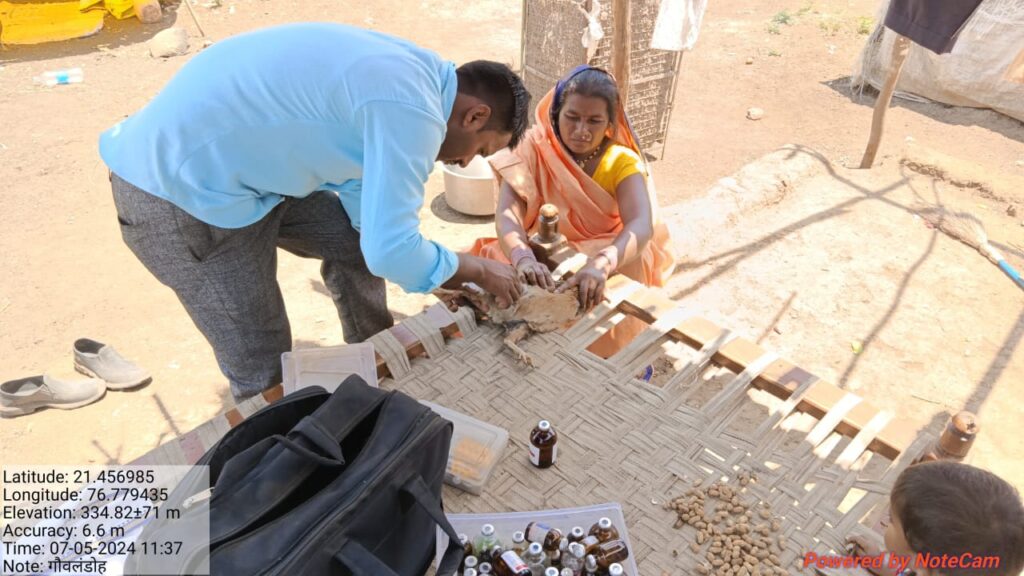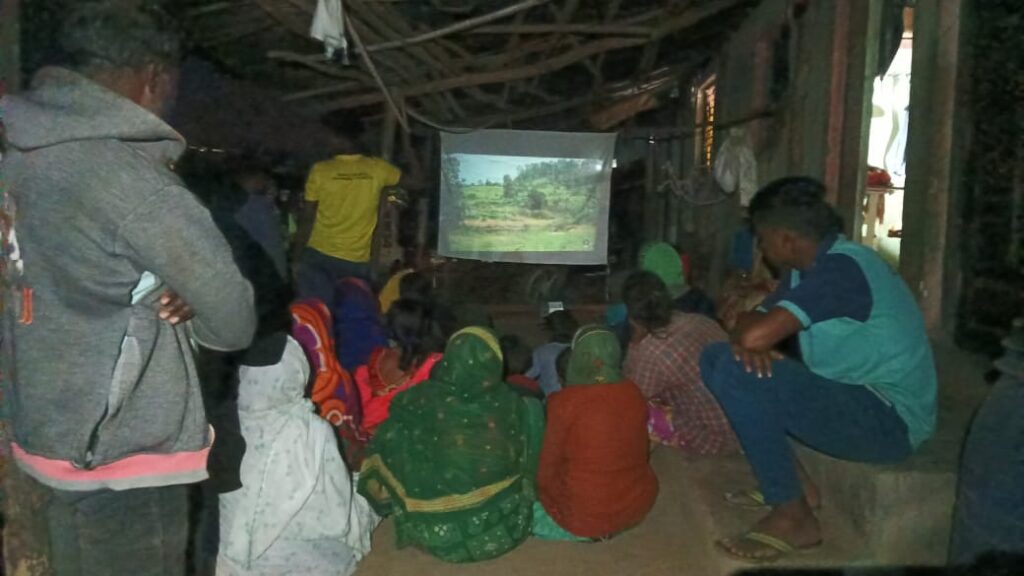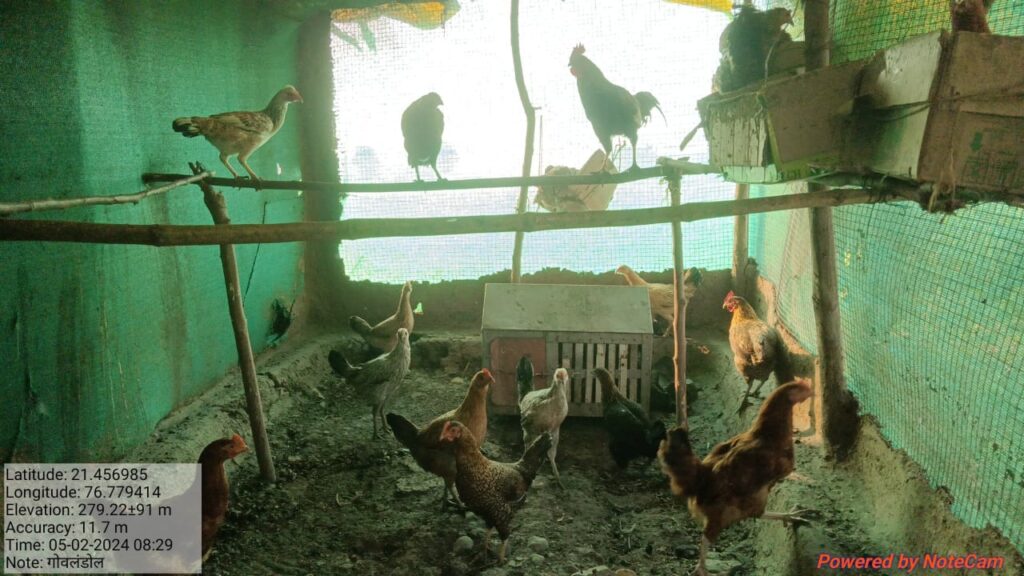Some 28 km from Dharni township in the Melghat region of Maharashtra lies Gaulandoh village, where Nirmadi Kasdekar lives with her husband, son and daughter-in-law, and two grandsons. Besides doing household chores, she is kept busy helping her husband and son on their three-acre farm. With expenses and needs both growing, Nirmadi thought of raising poultry to supplement the family income, as several women in the village were doing already. She bought three or four hens, which she would leave to forage outdoors, as most of the others did. However, this made the birds vulnerable to predators like crows and eagles, cats and dogs, causing considerable losses.

One day, SPS Community Media’s mobile cinema team held a screening in the village chaupal, or outdoor meeting place, of a film called ‘Ghar ki Murgi Sona Barabar’ (‘Counting My Chicks’). The film depicted various methods of looking after poultry, including timely vaccination to prevent disease, and keeping them in chicken coops, or poultry sheds, for better protection. The women poultry-keepers who attended the screening, including Nirmadi, were particularly impressed by the idea of the shed.
At the end of the screening, paravet Rohit Patel spoke about SPS’s Livestock Development Programme, and the benefits that members of its collectives could avail of, such as medical treatment for livestock as well as other types of aid. Nirmadi was motivated to ask Rohit Patel if she could become a member too. A few days later, with other women from her village, she joined the ‘Ma Saraswati Pashudhan Samuh’, a collective of livestock keepers.

Arrangements were made to take the collective’s 20 women members to the Baba Amte Empowerment Centre in Neemkheda in Madhya Pradesh for training – including visits to farmers’ homes. Here, the women from Gaulandoh village saw how the women of Neemkheda kept their poultry in specially built sheds that had been constructed with assistance from SPS, and how the birds were fed and watered regularly and very well cared for. The local women poultry keepers were earning well. Inspired by all they had seen, the Gaulandoh women were determined to follow suit.
After their return, Nirmadi asked Rohit at a meeting of their collective, “Can’t we get poultry sheds too, like the ones provided to the women members of Neemkheda’s collectives?” “You certainly can. The organisation will give you the green netting and steel mesh, as well as dishes for the hens’ food and water. These materials will be made available to you at a cost of Rs 1,200, while the market price comes to Rs 4,100. You’ll have to source the other things required yourselves – such as poles, bamboo, polythene sheets.” The women poultry keepers who had been to the Baba Amte Empowerment Centre for training all wanted sheds, and the paravet drew up a list of their names for the office. The members each paid Rs 1,200 as their contribution, while the remaining cost of Rs 2,900 for each shed was to be borne by SPS.

In January 2023, the first five women received their shed construction materials, which comprised 17 m. of green netting, 20 kg of 1.5 m. x 23 m. steel mesh, and the promised vessels. The women built their poultry sheds in their fields, or adjoining their homes. Now their hens were safe from birds and animals of prey.
Unfortunately, three of the five women did not quite manage to care for their hens as required – having the sheds proved futile in their case. The other two, of whom Nirmadi Kasdekar was one, maintained their sheds and looked after their birds diligently, feeding them on time and getting them vaccinated on schedule. When Nirmadi realised her troop of hens was multiplying well and staying healthy, she decided not to sell the eggs because it seemed more profitable to let them hatch into chickens that would fetch good prices when they grew bigger. Nirmadi is now able to sell her hens for Rs 600 or 700 each.

Nirmadi Kasdekar raises her poultry in keeping with the methods she learned during training, and cares for the birds like she would her own children. Last year, she earned Rs 5,000 - 6,000 from her poultry business. Currently, she has some 40 roosters, hens and chickens.
Writing: Shaikh Sajid
Source: Vikki nakhate
Photography: Rohit Patel
